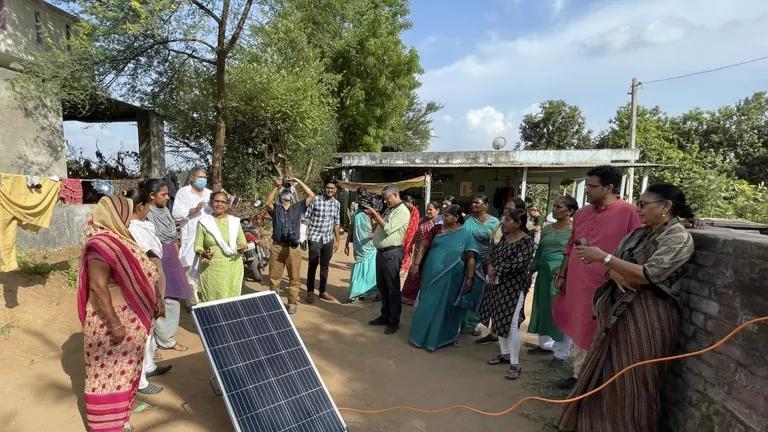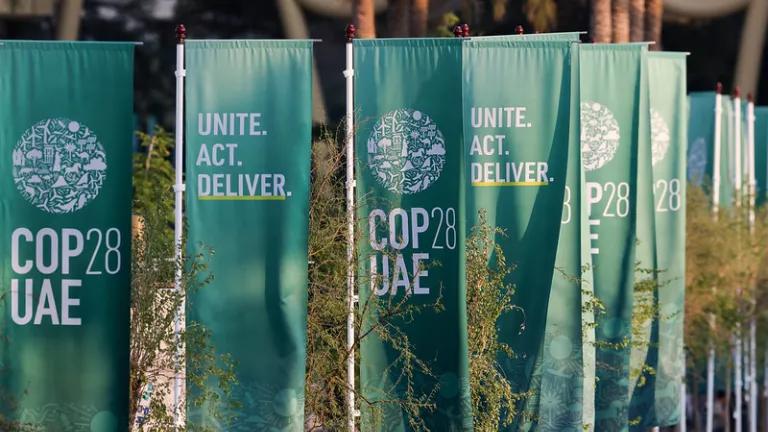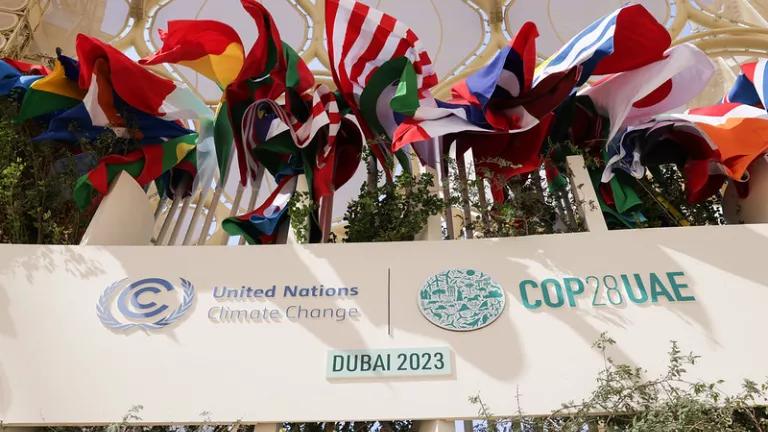International Solar Alliance: One Sun One World One Grid
India continues to set the tone for stronger climate action at COP26 with the Green Grids Initiative - One Sun One World One Grid launched today.

Co-authored with Jessica Korsh
India continues to set the tone for stronger climate action at COP26 with the Green Grids Initiative - One Sun One World One Grid launched today. The initiative proposes a common green grid through more than 100 countries and is the result of the International Solar Alliance (ISA’s) vision to provide clean energy access to all by 2030. Co-founded by the Government of India, the ISA launched in 2015 at the start of the Paris Climate Summit. Now six year later, the ISA continues to set the tone for more climate action.
The global grid would transfer surplus solar power generated in one region to meet electricity demand elsewhere, such as in developing nations largely dependent on fossil fuels.
"Solar energy is clean and sustainable. The only challenge is that it is only available in the day and is dependent on weather conditions. One Sun, One World, One Grid is a solution to this problem which will reduce the carbon footprint."
—Prime Minister Modi at the Accelerating Clean Technology, Innovation and Deployment session
Prime Minister Modi also announced that India’s space agency, ISRO will provide the world with a solar calculator application. The application will be able to map and measure the solar energy potential of any region across the globe so that solar projects can be planned accordingly.

Despite the tremendous progress in electrification across India, energy poverty and poor energy quality persist in many rural villages. Access to reliable and affordable clean energy can improve livelihoods, alleviate poverty, and reduce air pollution. Solar powered and distributed renewable energy solutions present a global opportunity to expand affordable clean energy access, mitigate the climate crisis, and create jobs.
Scaling up distributed renewable energy technologies like rooftop solar, mini- and micro-grids can simultaneously increase employment opportunities, particularly for rural women, and help the country reach its new climate target announced in Glasgow.
NRDC and Self-Employed Women’s Association (SEWA) are working on the women led Hariyali Green Villages initiatives to develop clean energy village plans to spur the clean energy transition in rural India. Expanding distributed renewable energy is an opportunity for developing countries to leapfrog fossil fuels and ensure newly electrified communities start with clean energy sources.

SEWA-NRDC Group Discussions in Rajasthan Under the Hariyali Project on Energy Use in Summer 2019.
NRDC, and partners are bringing together experts on November 9th (3 p.m. UTC/8:30 p.m. IST/10 a.m. ET) for a COP26 event Changing the Climate for the Most Vulnerable: Lessons on Climate Resilience in India, from Green Villages to Cool Cities. The session will share findings from effective programs that have led to real change, saved lives, and improved livelihoods. The discussion will highlight how some of these success stories can be brought to scale, often with the dual benefits of emissions reduced and lives saved.
Speakers include:
- Manish Bapna, President and CEO, NRDC
- Kamal Kishore, Member, National Disaster Management Authority (NDMA), India
- Dr. Dileep Mavalankar, Director, Indian Institute of Public Health, Gandhinagar (IIPH-G)
- Reema Nanavaty, Executive Director, Self Employed Women’s Association (SEWA)
- Moderated by Suruchi Bhadwal, Director of Earth Science and Climate Change, The Energy and Resources Institute (TERI)
Changing the Climate for the Most Vulnerable: Lessons on Climate Resilience in India, from Green Villages to Cool Cities
November 9, 2021
3 p.m. UTC/8:30 p.m. IST/10 a.m. ET
Online and at Radisson Blu, 301 Argyle St., Glasgow G2 8DL, UK
Register here
Jessica Korsh is a climate and health expert working as a consultant with NRDC.



